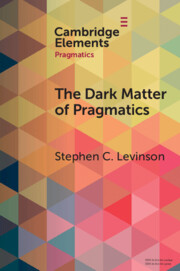Refine search
Actions for selected content:
3 results
Chapter 3 - Reading between the Lines
- from Part II - Understanding Cultural Norms and References
-
- Book:
- Lost in Automatic Translation
- Published online:
- 08 October 2025
- Print publication:
- 21 August 2025, pp 39-50
-
- Chapter
- Export citation

The Dark Matter of Pragmatics
- Known Unknowns
-
- Published online:
- 12 March 2024
- Print publication:
- 11 April 2024
-
- Element
-
- You have access
- Open access
- HTML
- Export citation
Chapter 2 - Speaker’s Meaning
-
- Book:
- Pragmatics in English
- Published online:
- 29 December 2022
- Print publication:
- 29 December 2022, pp 25-43
-
- Chapter
- Export citation
